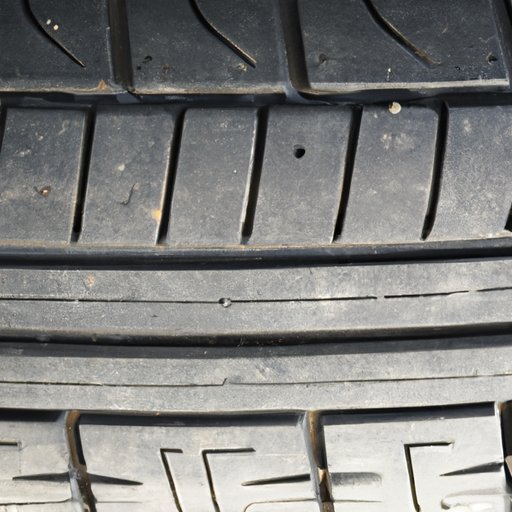
Introduction
When was the last time you checked your tires? They may not be the most glamorous part of your car, but they are vital to your safety on the road. Understanding the signs of wear and tear is crucial to knowing when it’s time to replace your tires. In this guide, we’ll take a closer look at how to tell if you need new tires and provide tips for maintaining them over time.
Signs of Wear and Tear
Wear and tear refer to the natural deterioration that happens over time as you drive your car. There are several physical signs you can look for to determine if your tires are starting to wear down. One of the most common is tread depth, or how much rubber is left on your tires. If you can see the wear bars, it’s time for new tires. Additionally, sidewall cracks, bulges, or other deformities can indicate damage that requires immediate attention. Uneven wear can also be a sign that your tires need to be rotated or replaced.
Take a close look at your tires and pay attention to any visible signs of wear and tear. You can easily recognize these signs and keep an eye on them with regular checks.
Performance Issues
Worn-out tires can cause significant performance issues while you’re driving. Reduced traction, longer stopping distances, and poor handling are just a few of the issues you might experience. These problems occur because the worn-out tires don’t grip the road effectively and can’t adapt to changing road conditions or weather.
For example, a tire with minimal tread left will have a harder time gripping the road on a rainy day, leading to a longer stopping distance and potentially causing an accident. It’s essential to understand how worn-out tires can impact your driving abilities.
Mileage-Based Replacement
The distance you can drive on a set of tires varies based on the manufacturer, the type of vehicle you drive, and the driving conditions you encounter. In general, it’s wise to replace tires after every 50,000 miles. However, this isn’t a fixed number, and it’s essential to remember that some vehicles may need new tires more frequently or less often.
Some tire brands are known for lasting far longer than others, depending on the quality and materials used to make the tires. It’s a good idea to research your options and choose a trusted manufacturer that provides the right balance of performance and durability.
Seasonal Changes
Different seasons impose different demands on your tires, and you may need to adjust your driving habits or take extra measures to ensure safety. For example, driving in the snow requires winter-specific tires with deep treads and firm grip to ensure your safety and the safety of others.
Regardless of the season, keeping your tires in good condition is essential to ensure your safety and reduce the risk of accidents. Understanding how weather changes and seasonal patterns affect your tires can help you make the necessary adjustments to avoid issues further down the line.
Maintenance Checks
Regular tire maintenance checks are necessary to prevent premature wear and tear and increase overall driving performance. Check your tire pressure regularly by using a tire gauge and referring to your car’s manual. Checking tire alignment can also be a vital aspect of ensuring long-term tire health.
These tips are straightforward and practical, allowing drivers to conduct maintenance on their tires independently. It’s best to perform these checks frequently, preferably once a month, to ensure that you always have a well-performing tire.
Conclusion
In conclusion, understanding the signs of wear and tear and other potential issues with your tires is essential to keeping you safe on the road. By conducting regular maintenance checks and replacing your tires as-needed, you can ensure your vehicle’s longevity and decrease the risk of accidents. Don’t ignore your tires—take a proactive approach and make sure you replace them when it’s time for the best chances of staying safe on the road.




